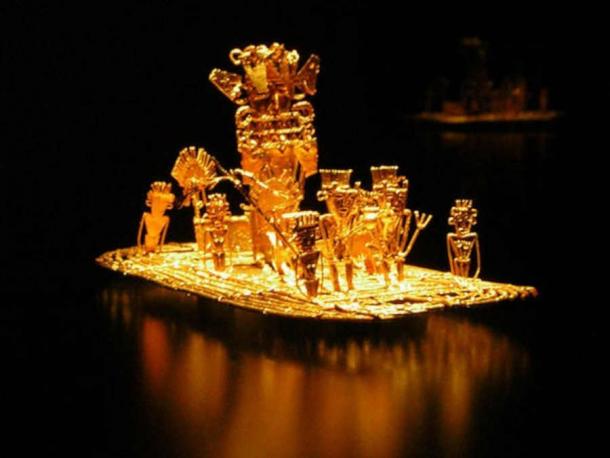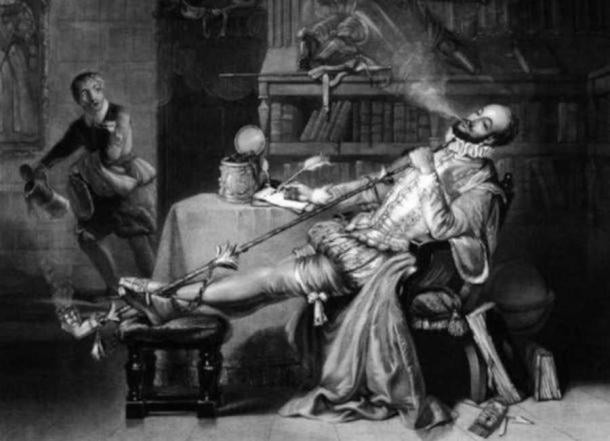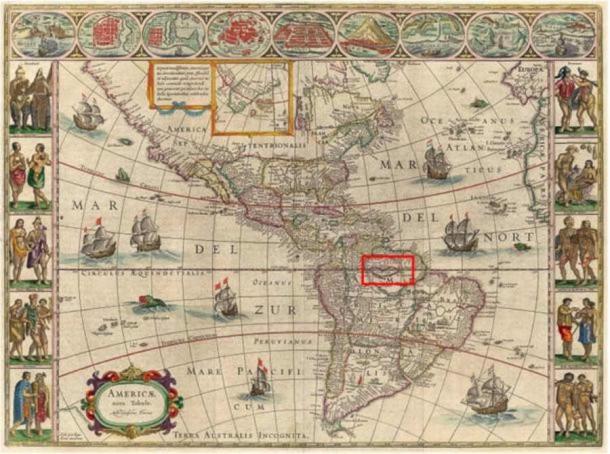
Lake Parime: The Legendary Lake of El Dorado
Gold has long been regarded as a precious object and has been equated with kingship and authority. As gold was rare, and sometimes not locally available, people often travelled over great distances and endured enormous hardships to obtain this precious commodity. In ancient Egypt, for instance, the New Kingdom pharaoh Hatshepsut boasts of a trade expedition south to the land of Punt, where, among other things, gold was brought back to Egypt. The quest for gold can also be perceived in Classical mythology. In the myth of Jason and the Argonauts, the hero’s quest was the attainment of a relic known as the Golden Fleece.
- Mountains of Silver: Tiny Bolivian village of Potosi was once the largest industrial mining complex in the world
- The Search for Cibola, the Seven Cities of Gold
The Chibcha Tribe and Their Gold Rituals
Ever since the myths and heroes of the Classical world were conceived, they have exerted a great influence on the European mind. Some have identified parallels between the stories of Jason’s quest for the Golden Fleece with certain tales from Europe’s Age of Discovery, one of the most famous of which is the search for El Dorado.
- The Stolen Treasure of Montezuma
- The Search for Z: Colonel Percy Fawcett’s Obsession with the Golden City (Video)

The quest for gold has existed for thousands of years. Jason with the Golden Fleece (1630) by Erasmus Quellinus II (Public Domain)
El Dorado means ‘the golden man’, and this legend began sometime in the 16th century when European explorers encountered the Chibcha tribe in Colombia. The explorers noted that during the initiation ceremony of a new chief, a ritual involving gold was practiced. The chief would be covered in gold dust before being sent out into the sacred lake of Guatavita on a raft. His attendants would throw offerings of gold, emeralds and other precious stones into the lake. Having seen the great wealth of the Incas and Aztecs whom they had recently subjugated, it was easy for them to have imagined that this Chibcha ritual was practiced on a daily basis, and that there was yet more gold to be found in the New World.

Muisca raft, representation of the initiation of the new Zipa in the lake of Guatavita, possible source of the legend of El Dorado. It was found in a cave in Pasca, Colombia in 1856, together with many other gold objects. Dated between 1200 and 1500 BC (Andrew Bertram/ CC BY-SA 1.0)
Sir Walter Raleigh and the Pursuit of El Dorado
For the subsequent two centuries, a number of European explorers, beginning with the Spanish, would be occupied with the quest for El Dorado. The biggest challenge facing the Spanish conquistadors was their ignorance of the geography of South America. Initially, the Spanish focused on the Andes, where the Incas and Chibcha tribe lived. When they failed, they moved further to the east of the continent.
It was during the 16th century that the legend of El Dorado caught the attention of the English explorer Sir Walter Raleigh. In 1584, Raleigh had captured a Spanish explorer by the name of Pedro Sarmiento de Gamboa, who told him about El Dorado. 11 years later, Raleigh sailed to South America in search of El Dorado.
In Trinidad, Raleigh captured another explorer called Antonio de Berrio, who told the Englishman that the fabled city was located close to the source of the Caroni River in modern day Venezuela. Raleigh then sailed up the Orinoco River, as the Caroni flowed into it. Although he succeeded in reaching the confluence of the two waterways, Raleigh was forced to turn back due to poor weather.
In 1596, Raleigh’s lieutenant, Lawrence Keymis, was sent to explore Venezuela and the Guianas. When Keymis returned, he reported that El Dorado was located beside a large lake known as Lake Parime by one tribe, and Lake Ropo-nowini by another. Raleigh’s publication of The Discoverie of the Large Rich, and Bewtiful Empyre of Guiana with a Relation of the Great and Golden Citie of Manoa (which the Spaniards Call El Dorado) became a hit in Europe, and Lake Parime was from then on related to El Dorado.

Sir Walter Raleigh went on two expeditions to find El Dorado. ‘Raleigh's First Pipe in England’ by Frederick William Fairholt, 1859. (Public Domain)
As a result of Raleigh’s exploration, European maps began depicting Lake Parime in the Guianas (placed somewhere in the interior initially, but later in the Rupununi River), alongside the fabled city of El Dorado. By the 18th century, however, both Lake Parime and El Dorado began disappearing from the maps, as cartographers began questioning the existence of these two entities. It was only in the 19th century that the legend of Lake Parime and El Dorado was finally laid to rest. The German explorer Alexander von Humboldt traversed the interior of the Guiana and reported that the flooding of the Rupununi during the wet season resulted in the appearance of a large lake where the Parime was believed to be located.

1621 map by Willem Blaeu showing Lake Parime straddling the equator, with "Manoa al Dorada" on the north shore, just below Lake Cassipa. (Public domain)
Enduring Fascination: The Allure of El Dorado
The legend of El Dorado has intrigued explorers and treasure seekers for centuries. Despite countless expeditions and archaeological endeavors, no solid proof of its existence has yet been discovered. Although von Humboldt claimed to have disproved the existence of Lake Parime, a modern explorer, Roland Stevenson, discovered an extinct lake in Roraima, Brazil (close to the Guianas of Raleigh’s time) in the 1970s. This discovery could well resurrect the legend of Lake Parime and El Dorado, and perhaps prove that this legend has some basis in reality.
The quest for El Dorado remains an intriguing mystery, captivating the imaginations of adventurers and historians alike.
Top image: Parime Lacus on a map by Hessel Gerritsz (1625). "Manoa, o el Dorado", appears on the northwestern corner of the lake. Source: Public Domain
By Ḏḥwty
References
Dotson, E., 2014. Lake Parime and the Golden City.
Available at: http://www.washmapsociety.org/000/0/9/8/22890/userfiles/file/Lake_Parime.pdf
Guyana Times International, 2013. My Guyana, El Dorado Our heritage of gold.
Available at: http://www.guyanatimesinternational.com/?p=25564
Sanchez, J.-P., 1993. El Dorado and the Myth of the Golden Fleece. In: W. Haase & M. Reinhold, eds. The Classical Tradition and the Americas, Volume 1 / Part 1: European Images of the Americas and the Classical Tradition. Berlin: Walter de Gruyter & Co., pp. 339-378.
Stevenson, R., 2015. Parime: Finding the Legendary Lake.
Available at: http://www.netium.com.br/parime/Parime_English.htm
Unknown, 2010. Historical snippets: Walter Ralegh and El Dorado.
Available at: https://www.stabroeknews.com/2010/10/24/features/historical-snippetswalt...















